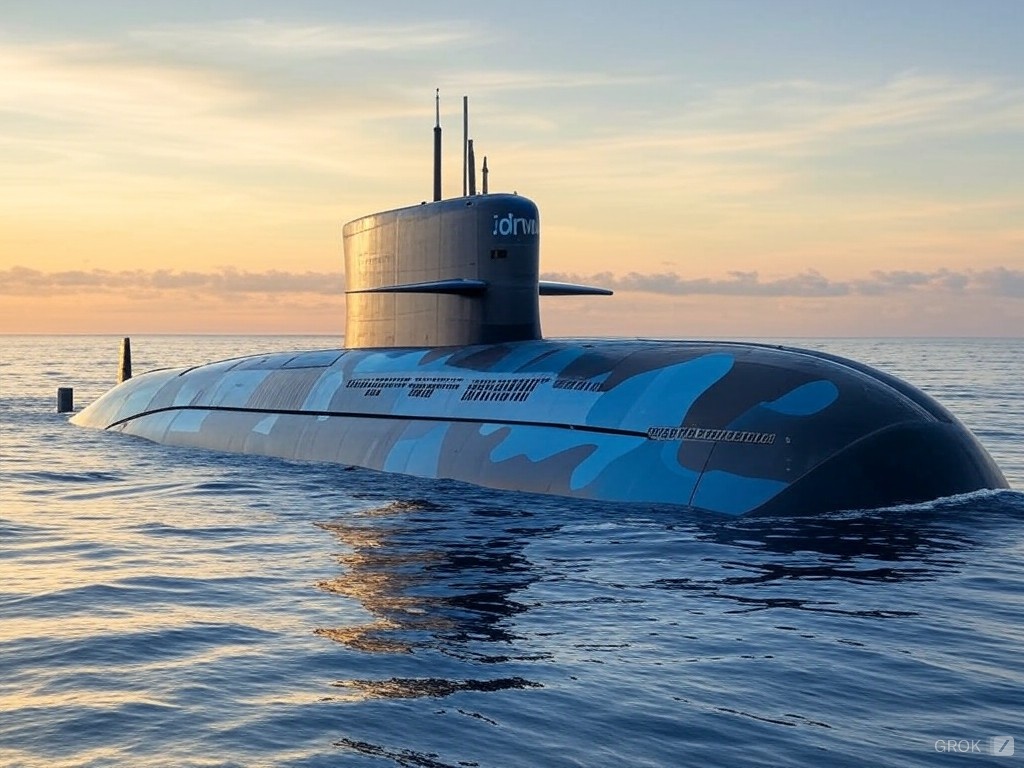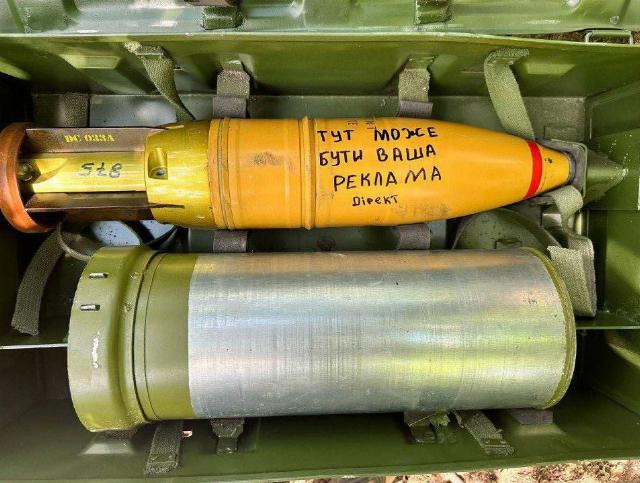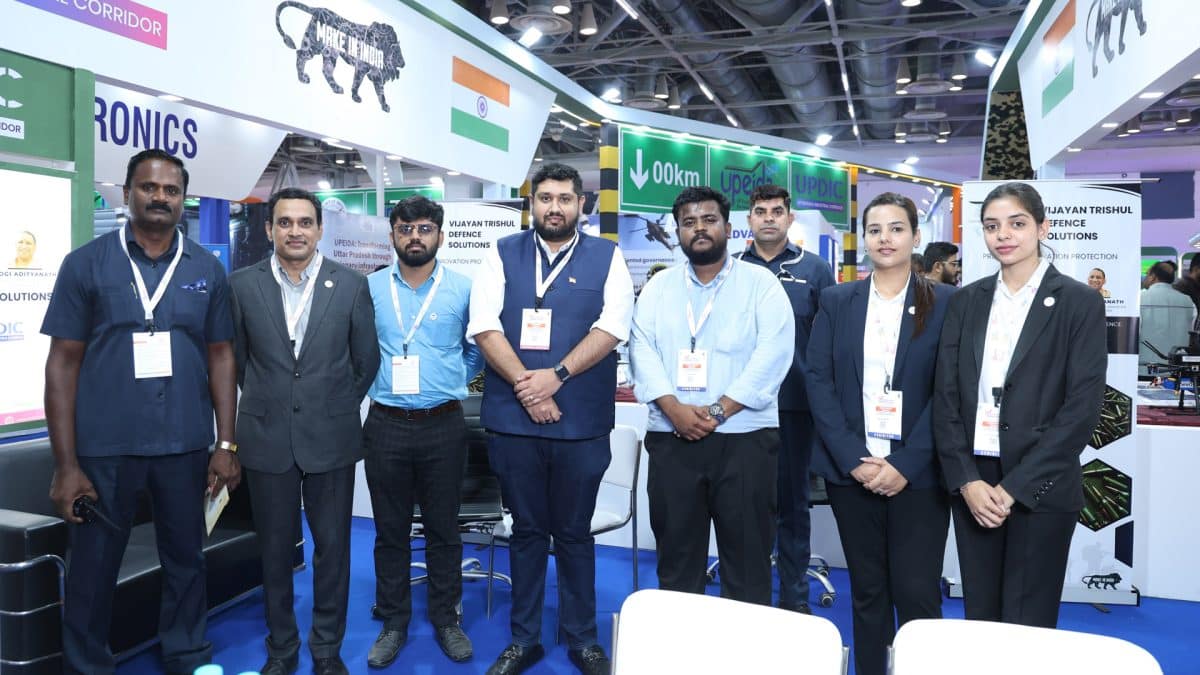SOURCE: IDRW.ORG


In a setback for the U.S.-backed Stryker Infantry Fighting Vehicle (IFV), reports have emerged of its underwhelming performance during high-altitude trials in Ladakh, conducted under the supervision of the Indian Army on behalf of General Dynamics Land Systems-Canada. While official details of the trials remain closely guarded, sources close to the Indian Army have shared revealing insights with idrw.org, painting a picture of significant operational challenges that could impact the Stryker’s prospects in India’s mechanized infantry modernization plans.
The trials, conducted in late 2024, have spotlighted the vehicle’s struggles in the rugged, oxygen-scarce terrain of Ladakh, contrasting sharply with the performance of India’s indigenous Wheeled Armoured Platform (WhAP) 8×8 in similar conditions.
Continue readingSOURCE: IDRW.ORG


India’s aerospace ambitions took a significant step forward with the development of the Hansa-NG (New Generation), an indigenous all-composite light aircraft designed by the Council of Scientific and Industrial Research-National Aerospace Laboratories (CSIR-NAL). Touted as India’s first aircraft in the CS-VLA (Certified Special Very Light Aircraft) category, the Hansa-NG is poised to revolutionize ab initio flight training, sports flying, and hobby aviation.
However, its journey hit a turbulence recently when the engine manufacturer, Rotax, hesitated to supply its advanced engines, citing potential military applications in UAVs or large drones. While this challenge has been successfully negotiated for now, it underscores the complexities of indigenous aerospace development in a globalized supply chain.
Continue readingSOURCE: AFI


India’s defense landscape is witnessing a seismic shift with the ongoing in-flight trials of the Astra MkIII, now officially christened “Gandiva” after the legendary bow of Arjuna from the Mahabharata. Powered by a Solid Fuel Ducted Ramjet (SFDR) propulsion system, this beyond-visual-range (BVR) air-to-air missile promises to redefine aerial combat for the Indian Air Force (IAF).
Coupled with the imminent integration of upgraded Gallium Nitride (GaN)-based Active Electronically Scanned Array (AESA) radars on the Tejas MkII and Advanced Medium Combat Aircraft (AMCA), Gandiva threatens to erode the Dassault Rafale’s long-held technological edge—its Meteor missile—in the IAF’s Multi-Role Fighter Aircraft (MRFA) tender for 110 jets. As indigenous innovation accelerates, the Rafale’s once-unassailable selling point may no longer hold sway.
Continue readingSOURCE: AFI


In a recent interview with a Pakistani news channel, Air Commodore Nouman Ali Khan, a decorated Pakistan Air Force (PAF) pilot credited with downing an Indian MiG-21 Bison in the 2019 aerial clash, provided a rare glimpse into the Rules of Engagement (ROE) governing that high-stakes encounter. Khan, famed for his role in Operation Swift Retort on February 27, 2019, stated that PAF’s ROE permitted the downing of Indian aircraft only if they attempted to cross the Line of Control (LoC) from Indian-controlled territory into Pakistan-occupied Kashmir (PoK).
He confirmed the shootdown of a MiG-21 that crossed into PoK airspace and claimed a second Indian jet, a Su-30 MKI, was also downed—albeit on the Indian side of the LoC after it approached the boundary. This admission raises questions about whether the PAF breached its own ROE, potentially handing India a strategic advantage in future air skirmishes by justifying a broader IAF response.
Continue readingSOURCE: AFI


The fate of India’s Dhruv Advanced Light Helicopter (ALH) fleet remains in limbo as the three-week timeline promised by Hindustan Aeronautics Limited (HAL) to determine its future expired on Monday, March 3. The fleet of approximately 300 choppers, a mainstay of the Indian armed forces and Coast Guard, has been grounded since January 5 following a fatal crash in Gujarat. With the eagerly awaited probe report still pending, questions persist about the operational readiness of this critical asset and the next steps for its return to service.
The grounding was triggered by a tragic incident involving an Indian Coast Guard ALH Dhruv Mk III helicopter, which crashed near Porbandar Airport on January 5, 2025. The accident claimed the lives of three crew members, prompting HAL to suspend operations of the entire fleet—spanning the Army, Navy, Air Force, and Coast Guard—pending a thorough investigation. This marked the second fleet-wide grounding in two years, raising fresh concerns about the reliability of the indigenous helicopter, which has been in service since 2002.
Continue readingSOURCE: AFI


In a significant boost to India’s defense capabilities, Prime Minister Narendra Modi is set to lay the foundation stone for a state-of-the-art missile testing range in Nagayalanka, Andhra Pradesh. Valued at ?20,000 crores, this cutting-edge facility, developed by the Defence Research and Development Organisation (DRDO), is poised to become a cornerstone of India’s indigenous missile development program. The site will specialize in testing advanced surface-to-air missiles (SAMs) and anti-tank missiles, reinforcing India’s growing stature as a global defense powerhouse.
Located along the coastal region of Krishna district, the Nagayalanka testing range is designed to meet the demands of India’s rapidly expanding missile arsenal. The facility will provide a controlled environment for live-fire trials, data collection, and performance evaluation of next-generation missile systems. With a focus on surface-to-air and anti-tank platforms, it will support the development of critical technologies aimed at countering aerial threats and armored assaults—key priorities for India’s armed forces amid evolving regional security challenges.
Continue readingSOURCE: AFI


PTC Industries, a leading Indian manufacturer specializing in advanced titanium castings, has been honored with the prestigious Special Recognition Award from BAE Systems for its pivotal contributions to the M777 India Offset Project. The accolade, presented by global defense giant BAE Systems, highlights PTC’s unwavering dedication to innovation and excellence in delivering critical components for defense applications, particularly in the aerospace and military sectors.
The award was celebrated with special gratitude extended to Mr. Joel Hunt, Director of Supply Chain at BAE Systems, and Mr. John Borton, Managing Director of Weapons Systems UK at BAE Systems, for recognizing PTC’s efforts. This milestone underscores the company’s role as a trusted partner in advancing India’s defense capabilities while reinforcing its position as a global leader in high-precision manufacturing.
Continue readingSOURCE: RAUNAK KUNDE / NEWS BEAT / IDRW.ORG


In a world exclusive by idrw.org, insider sources reveal that the Indian Navy’s next-generation S5 Class of nuclear-powered ballistic missile submarines (SSBNs), which will boast a submerged displacement of over 13,000 tons, might be equipped with nuclear reactors more powerful than previously reported.
The Bhabha Atomic Research Centre (BARC) has been at the forefront of developing a 190MW pressurized light-water reactor (PWR) fueled with enriched uranium to power these submarines. However, there are indications that this might not meet the full spectrum of future operational requirements for the S5 Class.
Continue readingSOURCE: RAUNAK KUNDE / NEWS BEAT / IDRW.ORG


India’s pursuit of cutting-edge air-to-air missile technology has reached a significant milestone with the Astra MkIII, also known as the Solid Fuel Ducted Ramjet (SFDR), now christened “Gandiva.” Named after the legendary bow of Arjuna, the heroic archer from the Hindu epic Mahabharata, the Gandiva missile embodies precision, power, and adaptability—qualities reflective of its mythological namesake.
The Astra MkIII, or “Gandiva,” builds on the success of its predecessors, the Astra Mk-1 (80–110 km range) and Mk-2 (140–160 km range), both of which have bolstered the IAF’s air combat capabilities. Unlike conventional rocket-powered missiles, the MkIII employs a solid fuel ducted ramjet (SFDR) propulsion system—a cutting-edge technology that uses atmospheric oxygen as an oxidizer, eliminating the need for onboard oxidizers and allowing for a lighter, more efficient design. This ramjet system, developed by the Defence Research and Development Organisation (DRDO), enables the missile to sustain supersonic speeds (up to Mach 4.5) over extended ranges, reportedly exceeding 300–350 kilometers, depending on launch conditions.
Continue readingSOURCE: RAUNAK KUNDE / NEWS BEAT / IDRW.ORG


In a significant revelation about the Indian Air Force’s (IAF) strategic priorities, a senior IAF official, speaking anonymously to idrw.org, has confirmed that the IAF is not considering the purchase of Russia’s Su-57E or the US-made F-35 Lightning II, two of the world’s most advanced fifth-generation fighter aircraft. Instead, the IAF is firmly backing the indigenous Advanced Medium Combat Aircraft (AMCA) program, which it views as crucial for its long-term operational needs and India’s pursuit of self-reliance in defense technology.
This statement comes amid ongoing discussions about the IAF’s fighter acquisition strategy, including the long-delayed Multi-Role Fighter Aircraft (MRFA) program and the production challenges faced by Hindustan Aeronautics Limited (HAL).
Continue readingSOURCE: AFI


India’s underwater ambitions are surging forward on dual tracks, but not without stirring confusion and debate. The Defence Research and Development Organisation (DRDO) is gearing up to seek Cabinet Committee on Security (CCS) approval for Project-76—a bold plan to design and build six next-generation electric-conventional (diesel-electric) submarines with cutting-edge indigenous technology. Yet, even as this homegrown effort gains momentum, India is poised to procure six German submarines under Project-75I, to be locally manufactured with Thyssenkrupp Marine Systems (TKMS) and Mazagon Dock Shipbuilders Limited (MDL). This parallel pursuit has puzzled India’s defense community, with many questioning why the nation is betting on foreign collaboration when it claims the know-how to go it alone—and fast-track its own program instead.
Project-76 represents DRDO’s vision for a fully indigenous submarine fleet, building on decades of experience from the Arihant-class nuclear submarines and Project-75’s Scorpène collaboration with France. With CCS approval expected within two months (by April 2025, per sources to The Hindu), the program aims to deliver six diesel-electric submarines boasting 90-95% indigenous content—think weapons, sonars, combat systems, and DRDO’s phosphoric acid-based Air-Independent Propulsion (AIP) system. Displacing 3,000-4,000 tons, these boats promise lithium-ion batteries, pump-jet propulsion, and possibly vertical launch systems (VLS) for cruise missiles, with design completion targeted for 2028 and the first hull afloat by 2033-34.
Continue readingSOURCE: AFI


The European Union is reportedly exploring India as a potential supplier of artillery shells and small ammunition to support Ukraine, following a dramatic halt in U.S. weapons deliveries. The shift comes after a heated exchange between U.S. President Donald Trump and Ukrainian President Volodymyr Zelensky during a White House meeting, where discussions of a possible peace deal reportedly devolved into a verbal shouting match. With tensions rising and traditional supply chains disrupted, the EU is now looking eastward to bolster its support for Kyiv.
The White House meeting, intended to explore pathways to de-escalate the ongoing Russia-Ukraine conflict, instead exposed deep fissures between Washington and Kyiv. Sources familiar with the encounter describe a tense confrontation, with Trump pressing Zelensky to consider concessions to Moscow as part of a broader peace framework—a stance Zelensky vehemently rejected. The Ukrainian leader, whose country has relied heavily on U.S. military aid since Russia’s invasion in 2022, reportedly accused Trump of undermining Ukraine’s sovereignty, while Trump countered that endless funding and arms shipments were no longer sustainable for American taxpayers.
Continue readingSOURCE: AFI


As India’s mechanized forces patrol the volatile western borders with Pakistan, a glaring vulnerability looms overhead: an outdated air defense network struggling to counter modern aerial threats. Legacy systems like the Soviet-era OSA-AKM (SA-8 Gecko) and handheld Igla-1M and Igla-S missiles have soldiered on valiantly, but their age and limitations leave gaps that adversaries could exploit. Enter the Russian Pantsir—a hybrid missile-gun system that Lt. General (Retd) Dushyant Singh believes could bridge this operational void. Speaking to Sputnik India, Singh emphasized, “Currently, India’s mechanized forces along the western borders rely on legacy systems… and immediate procurement of advanced imported systems like Pantsir can bridge the current operational void.”
India’s western frontier, stretching from the arid plains of Rajasthan to the rugged heights of Jammu and Kashmir, demands robust protection against a spectrum of threats—drones, helicopters, low-flying jets, and precision-guided munitions. The Indian Army’s short-range air defense (SHORAD) relies heavily on the OSA-AKM, inducted in the 1980s, with a 10-kilometer range and aging radar that struggles against stealthy or fast-moving targets. The Tunguska SPAAG, another Cold War relic, pairs guns and missiles but suffers from spare parts shortages, with posts on X noting that cannibalization has halved its operational fleet. Handheld systems like the Igla-1M and Igla-S, while portable, cap out at 5-6 kilometers—insufficient against Pakistan’s growing drone arsenal or China’s lurking J-10s and H-6 bombers.
Continue readingSOURCE: AFI


In a significant boost to India’s defense manufacturing sector, Delhi-based Vijayan Trishul Defence Solution Pvt Ltd has been allocated a 20-hectare plot by the Uttar Pradesh Expressways Industrial Development Authority (UPEIDA). The land, situated in the Jhansi node of the Uttar Pradesh Defence Industrial Corridor, will serve as the foundation for a new facility dedicated to the production of small-caliber weapons and ammunition. This development marks a pivotal step in the company’s mission to enhance India’s self-reliance in defense production while contributing to national security.
The allocation, announced on February 24, 2025, underscores the growing momentum of the Uttar Pradesh Defence Industrial Corridor, an ambitious initiative launched by the Indian government to foster indigenous defense manufacturing. Spanning six nodes—Lucknow, Kanpur, Jhansi, Agra, Aligarh, and Chitrakoot—the corridor aims to attract investment, create jobs, and reduce India’s dependence on imported arms. The Jhansi node, located in the Bundelkhand region, has emerged as a key hub, benefiting from its strategic connectivity to expressways and proximity to Delhi.
Continue readingSOURCE: IDRW.ORG


In a significant revelation, the Defence Research and Development Organisation (DRDO) has confirmed that its Long-Range Anti-Ship Missile (LRAShM), a hypersonic glide weapon tested in November 2024, achieved a speed of Mach 10—far exceeding the Mach 6-7 range speculated by many defence analysts post-trial.
The LRAShM, successfully flight-tested on November 16, 2024, from Dr. APJ Abdul Kalam Island off the coast of Odisha, was initially hailed as India’s first long-range hypersonic missile, with a reported range exceeding 1,500 kilometers. Developed indigenously by DRDO’s Dr. APJ Abdul Kalam Missile Complex in Hyderabad, in collaboration with other DRDO labs and industry partners, the missile combines the blistering speed of a ballistic missile with the maneuverability of a cruise missile. During the trial, tracked by multiple range systems across domains, the missile demonstrated terminal maneuvers and pinpoint accuracy, striking its target with devastating effect.
Continue reading